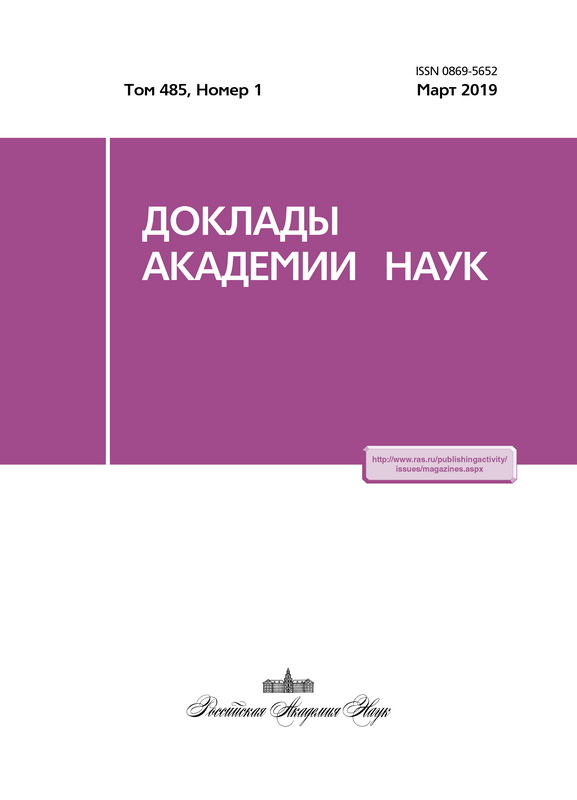Changing of body proportion during growth in hydrothermal vestimentiferan Oasisia alvinae Jones 1985 (Annelida, Siboglinidae)
- Authors: Karaseva N.P.1, Rimskaya-Korsakova N.N.1, Gantsevich M.M.1, Malakhov V.V.1
-
Affiliations:
- Lomonosov Moscow State University
- Issue: Vol 485, No 1 (2019)
- Pages: 122-125
- Section: General biology
- URL: https://journals.eco-vector.com/0869-5652/article/view/12919
- DOI: https://doi.org/10.31857/S0869-56524851122-125
- ID: 12919
Cite item
Abstract
During the growth of hydrothermal vestimentiferan Oasisia alvinae the trunk part of body was found to be elongated (from 51 to 83.4% of the overall body length), while the relative dimensions of all other body regions decreased. This was related to the enhanced trophosome and gonad development in the trunk part. We suppose that predominant trunk growth is a common feature of all vestimentiferans.
About the authors
N. P. Karaseva
Lomonosov Moscow State University
Author for correspondence.
Email: mgantsevitch@gmail.com
Russian Federation, 1, Leninskie gory, Moscow, 119991
N. N. Rimskaya-Korsakova
Lomonosov Moscow State University
Email: mgantsevitch@gmail.com
Russian Federation, 1, Leninskie gory, Moscow, 119991
M. M. Gantsevich
Lomonosov Moscow State University
Email: mgantsevitch@gmail.com
Russian Federation, 1, Leninskie gory, Moscow, 119991
V. V. Malakhov
Lomonosov Moscow State University
Email: mgantsevitch@gmail.com
член-корреспондент РАН
Russian Federation, 1, Leninskie gory, Moscow, 119991References
- Карасева Н. П., Римская-Корсакова Н.Н., Галкин С. В., Малахов В. В. Таксономия, географическое и батиметрическое распространение вести- ментифер (Annelida, Siboglinidae) // Зоол. журн. 2016. Т. 95. № 6. С. 624-659.
- Малахов В. В., Галкин С. В. Вестиментиферы – бес- кишечные беспозвоночные морских глубин. M.: KMK Sci. Press, 1998. 205 c.
- Andersen A. C., Jolivet S., Claudinot S., Lallier F. H. Biometry of the Branchial Plume in the Hydrothermal Vent Tubeworm Riftia pachyptila (Vestimentifera; Annelida) // Canad. J. Zool. 2002. V. 80. P. 320-332.
- Cavanaugh C. M., McKiness Z.P., Newton I. L.G., Stewart F. J. Marine Chemosynthetic Symbioses. In: The Prokaryotes. Prokaryotic Biology and Symbiotic Associations. 4th ed. Heidelberg; N.Y.: Dordrecht; L.: Springer, 2013. P. 579–607.
- Dattagupta S., Miles L. L., Barnabei M. S., Fisher Ch.R. The Hydrocarbon Seep Tubeworm Lamellibrachia luymesi Primarily Eliminates Sulfate and Hydrogen Ions across Its Roots to Conserve Energy and Ensure Sulfide Supply // J. Exp. Biol. 2006. V. 209. P. 37953805.
- Freytag J. K., Girguis P. R., Bergquist D. C., Andras J. P., Childress J. J., Fisher Ch.R. A Paradox Resolved: Sulfide Acquisition by Roots of Seep Tubeworms Sustains Net Chemoautotrophy // Proc. Nat. Acad. Sci. USA. 2001. V. 98. № 23. P. 13 408-13 413.
- Hilario A., Capa M., Dahlgren T. G., Halanych K. M., Little C. T. S., Thornhill D. J., Verna C., Glover A. G. New Perspectives on the Ecology and Evolution of Siboglinid Tubeworms // PLoS One. 2011. V. 6. Iss. 2. P. 1-13.
- Jones M. L. On the Vestimentifera, New Phylum: Six New Species and Other Taxa, from Hydrothermal Vents and Elsewhere // Bull. Biol. Soc. Wash. 1985. V. 6. P. 117-158.
- Julian D., Gaill F., Wood E., Arp A. J., Fisher C. R. Roots as a Site Ofhydrogen Sulphide Uptake in the Hydrocarbon Seep Vestimentiferan Lamellibrachia sp. // J. Exp. Biol. 1999. V. 202. P. 2245-2257.
- Stewart F. J., Cavanaugh C. M. Symbiosis of Thioauto- trophic Bacteria with Riftia pachyptila. In: Progress in Molecular and Subcellular Biology. Molecular Basis of Symbiosis. B.; Heidelberg; Springer-Verlag, 2005. P. 197-225.
- Thornhill D. J., Fielman K. T., Santos S. R., Ha- lanych K. M. Siboglinid-Bacteria Endosymbiosis. A Model System for Studying Symbiotic Mechanisms // Commun. & Integrat. Biol. 2008. V. 1. № 2. P. 163-166.
- Webb M. Lamellibrachia barhami, gen. nov., sp. nov. (Pogonophora), from the Northeast Pacific // Bull. Mar. Sci. 1969. V. 19. P. 18-47
Supplementary files







